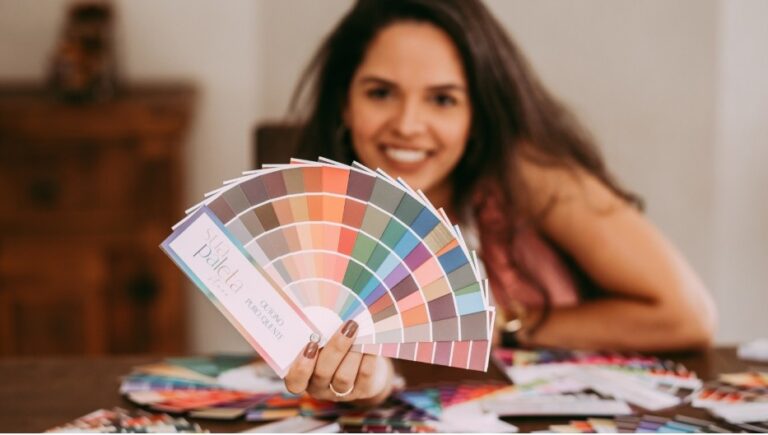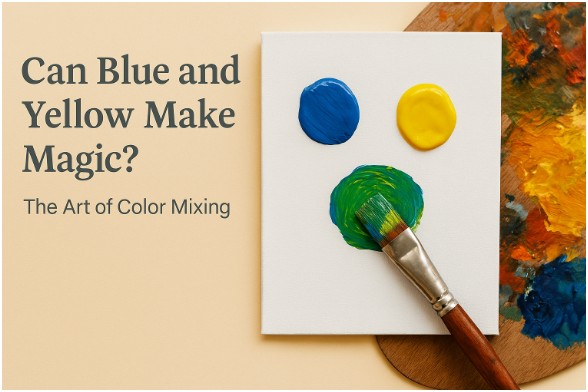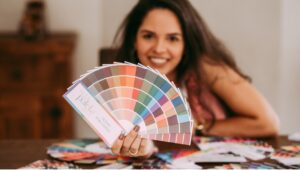I remember the first time I tried to create the perfect shade of blue for a project. It was a lazy Saturday afternoon, and I had a canvas in front of me, ready to paint a piece for my living room. But there was one tiny issue: I couldn’t quite figure out what colors to mix to make blue! I thought blue would just magically appear, but turns out, that’s not how it works. After a bit of trial and error (and a few splashes of paint on my favorite apron), I figured it out.
And now, I’m here to pass that knowledge onto you—whether you’re a seasoned DIYer or just starting your crafting journey. Understanding how to mix colors to make blue is a vital skill if you want to experiment with different shades and create custom hues for your projects.
But before you grab your paintbrush, let’s get into the basics of color mixing and how you can create your own perfect shade of blue. Trust me, once you get the hang of it, you’ll be mixing blues like a pro!
What Colors Do You Mix to Make Blue in the First Place?

Okay, let’s start with the very foundation of color theory. Here’s the deal: blue is a primary color. That means it cannot be made by mixing other colors together—no matter how hard you try!
Instead, blue sits proudly on the color wheel, along with red and yellow, which are the other two primary colors. Now, in the world of painting (the subtractive color model), you can’t mix other paints to get blue. However, in printing (the CMY or cyan, magenta, yellow model), blue can be made by combining cyan and magenta.
But unless you’re printing, let’s stick to the basics: blue is a base color all on its own. If you’ve ever been tempted to mix yellow and green to make blue (I know, it sounds plausible, right?), I’ve got some bad news: it won’t work. Instead, let’s focus on how you can play around with blue to create the perfect shades for your projects.
How Do You Make Light Blue?

So, you’ve got your blue paint (whether it’s royal blue, cobalt blue, or any shade you prefer), and now you’re ready to brighten it up. Here’s where the fun begins—mixing your blue into lighter versions is a fantastic way to add dimension to your projects.
Start with Your Base Blue
Begin by squeezing out a small amount of blue acrylic paint (I recommend Drawlish Blue for its rich consistency and vibrant color). This is your base, and it will be the starting point for creating your light blue.
Add White for a Soft Touch
The trick to making light blue is simple: add white. I always find that adding white in small amounts is key. Start slow—too much white and your blue might turn into a dull pastel. You want to maintain the vibrancy of your blue, just softened a bit. Mix well and test the shade on your palette. Need it lighter? Add a tad more white, then mix it again. A fun shade you can create using this method is Powder Blue—it’s a soft, dreamy color perfect for painting calming sky scenes or light-filled interiors. It’s like a pastel version of blue that reminds me of the soft blue teacups I used to admire in antique shops.
How Do You Make Dark Blue?
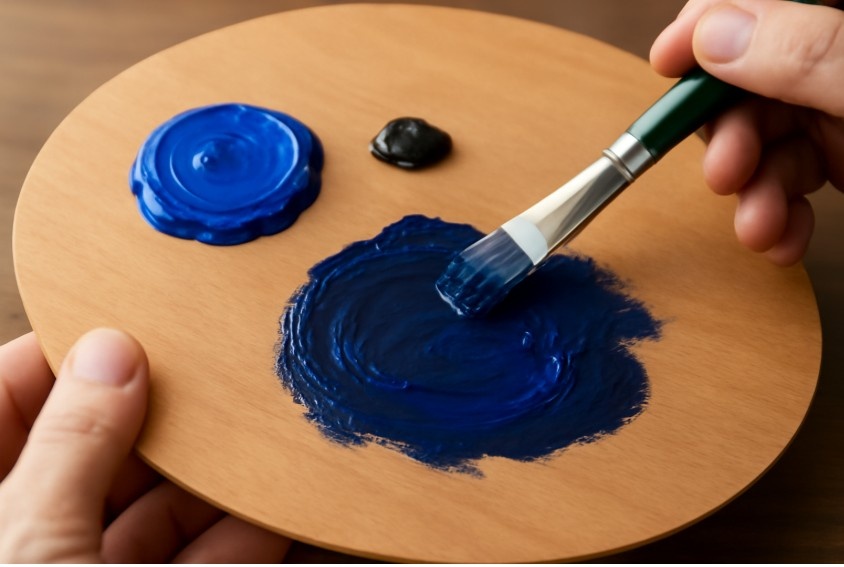
Dark blue is all about creating depth and drama. If you’re aiming for a bold, rich blue, here’s how to get the perfect shade.
Mix in Some Black or Purple
Start with your base blue, and this time, mix in a tiny bit of black. You want to add just a touch—if you’re too heavy-handed with black, you might end up with something closer to gray. The goal is to deepen the blue without losing its character.
Alternatively, I sometimes use purple (like dioxazine purple) to deepen the blue, giving it a more sophisticated tone. Purple complements blue and can create a slightly warmer, richer shade.
One of my favorite dark blue shades to create is Navy Blue—rich, deep, and elegant. A navy hue can really elevate the mood of a piece, whether you’re working on home decor or a craft project.
Can You Create Specific Shades of Blue?
Absolutely! Once you understand the basics of creating lighter and darker blues, you can start experimenting with more specific shades. You can mix different shades of blue to find the exact tone you’re after or add complementary colors to give your blue a unique twist.
Want Turquoise? Try Mixing Blue and Green
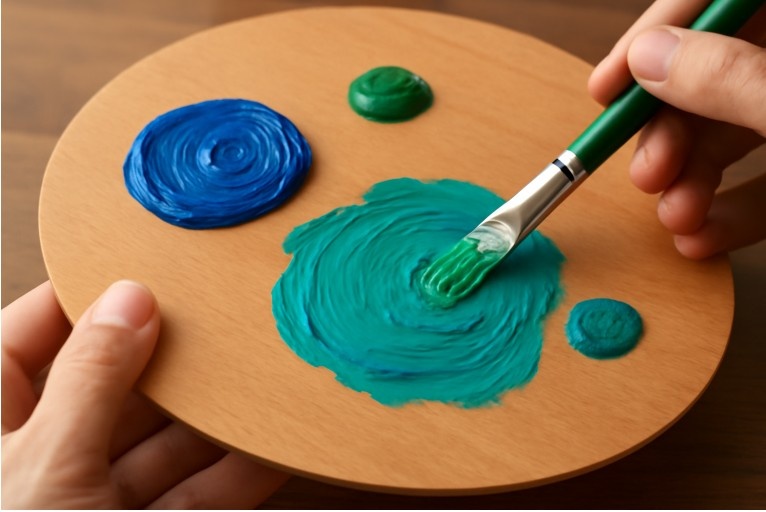
To create a vibrant turquoise or teal blue, simply add a little bit of green to your base blue. Depending on how much green you add, you can make the color pop with that beautiful oceanic feel that reminds you of tropical beaches.
Looking for Something Rich Like Royal Blue?
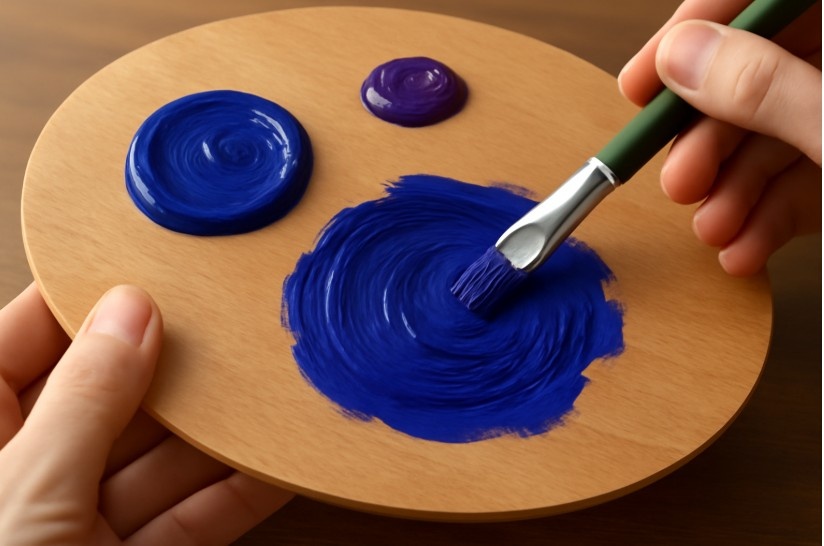
To make royal blue, start with a deep, vivid blue as your base, and then add a touch of purple or violet. Mix it slowly until you get that regal, striking shade. Royal blue is perfect for accent pieces or bold color statements in any project.
How About a More Subtle Shade Like China Blue?
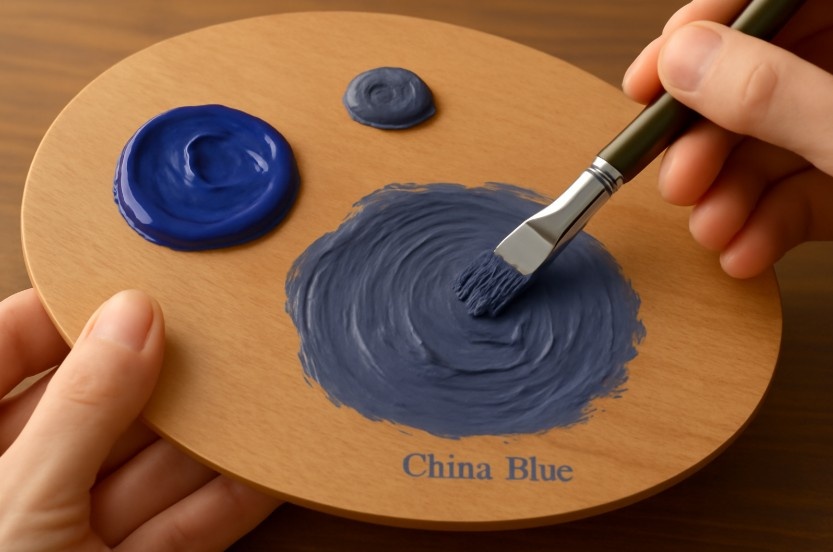
If you want to create a more muted, sophisticated blue, China Blue is a great option. Start with your base blue and add just a small amount of black or gray. The gray tones it down and gives it a refined, subtle elegance. This shade is ideal for vintage or classical projects.
Frequently Asked Questions
1. Do Yellow and Green Make Blue?
Nope! Yellow and green do not make blue. Since blue is a primary color, it can’t be created by mixing other colors. Yellow and green will just give you a yellow-green or lime color, not blue. So, if you’re working on a project and need blue, you’ve got to start with blue paint.
2. What Two Colors Make Royal Blue?
To create royal blue, you’ll want to mix primary blue with a touch of purple or violet. It’s that simple! Start with your blue base and slowly add the purple or violet. This will give you that bold, rich, royal hue.
3. How Do You Make Teal Blue?
To make teal blue, mix your base blue with green. A little green goes a long way in creating that vibrant teal color. You can adjust the ratio of blue to green depending on whether you want a more blue-toned teal or a green-toned one.
Time to Get Crafting: Blue is Just the Beginning!
Now that you know the ins and outs of mixing blue, it’s time to get creative! There are endless possibilities when it comes to mixing and customizing shades of blue to fit your projects.
Whether you’re painting a mural, decorating your living room, or crafting a beautiful piece of DIY decor, the ability to craft your perfect shade of blue is at your fingertips. I hope this guide has helped you understand what colors do you mix to make blue and how you can create everything from light powder blues to dark, rich navy hues. Don’t be afraid to experiment and create your own unique versions of blue—you’ll be amazed at how much fun it can be!
The Blue That Speaks to You
Now, I want to know—what’s your favorite shade from the blue color pallete? Are you a fan of the calming light blues, or do you prefer the depth of navy? Drop me a comment below or share your thoughts! Let’s keep the creativity flowing, and as always, happy crafting!





